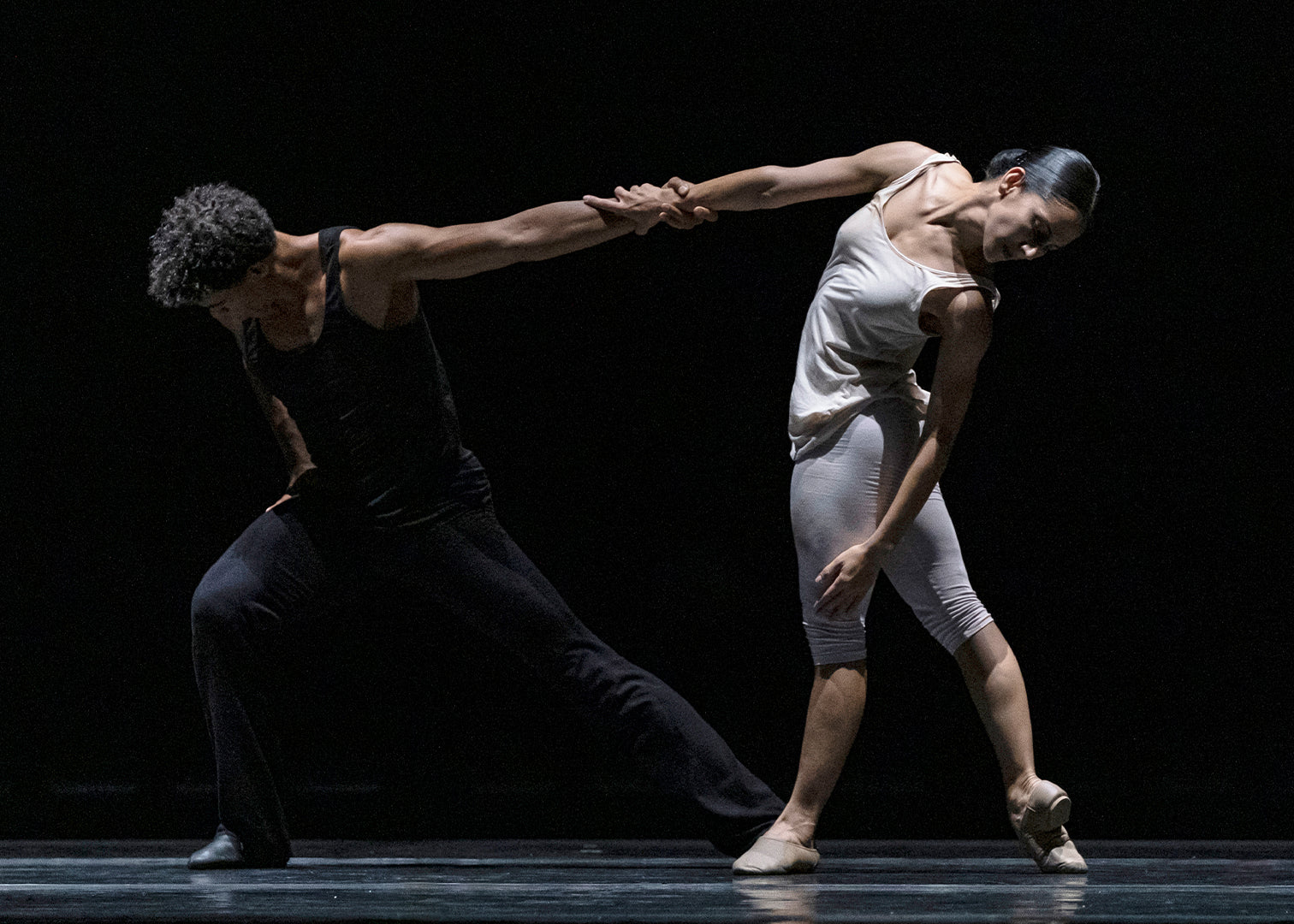Under the artistic directorship of former Graham dancer, Janet Eilber, the company presented a five-part program that proved unique in that four of the works were accompanied by live music—Christopher Rountree and his locally-based ensemble, the estimable wild Up—a rarity these days, to be sure. Indeed, the repertory was chosen to showcase Graham’s relationship to composers, which she cultivated over the length of her enormously fertile career, by commissioning some 70 works.
Firmly believing that the music should not only frame and enhance the dance, but that the dance should be the main event—with music composed expressly to support the movement—Graham differed from many of her contemporaries (Balanchine, for example, in his collaboration with Stravinsky), as well as some of today’s leading choreographers such as music visualist Mark Morris.
As part of her process, Graham wrote a scenario that did not prescribe specific steps, but instead spoke of characters and what was happening in each scene, before giving it to her chosen composer. That was the case with her 1946 masterpiece, “Cave of the Heart,” her rendering of Medea with music by Samuel Barber.
Teeming with blood and guts, jealousy and revenge, the work also featured Isamu Noguchi’s rock-strewn landscape, with an intense Xin Ying delivering a hypnotic and devastating performance as the green-with-envy sorceress of the title. Obsessed and maddened by love and deploying emotions that climax in the celebrated snakelike solo with its multiple “cave” turns, Medea commits murder to get back at her erstwhile husband Jason.
A tattooed Ben Schultz, all preening machismo that included powerful lifts and gravity-defying leaps, has abandoned Medea in order to marry the Princess, his cool bravado turning into a harrowing sorrow when his new lover, danced by Charlotte Landreau—beguiling and joy personified—meets death at the hand of Medea. Natasha Diamond-Walker, a majestic Chorus who moved with an arresting fervency, warns, to no avail, of the pending doom.
This scenario is well wedded to Barber’s über-dramatic score, which thrilled with jagged notes, swelling strings and foreboding motifs that played out across flutes and reeds, adding allure and heft to a dance that retains jewel-like status to this day.
Passion also permeates “Dark Meadow,” a 1946 work that is one of Graham’s most psychological and abstract—a dance, in effect, of questioning. In her original program note to “Dark Meadow,” she wrote that it “is a re-enactment of the mysteries which attend the eternal adventure of seeking.” At fifty minutes, however, the work’s original length, it wasn’t practical for touring programs, which prompted Eilber, to conceive an edited version.
With a commissioned score by Carlos Chávez (curiously, he was originally asked to compose music to “Cave,” but failed to meet deadlines), the dance contains some of Graham's loveliest ensemble choreography: A tantalizing chorus of archaic lovers—surefooted, engaging and performing their moves with unfaltering unity—amplify the heroine's own search in this ritualistic opus of fertility and rebirth.
Signature Graham motifs permeate the work, with Anne O’Donnell as She Who Seeks heroic in her gestures, her arms beseeching and heartbreakingly beautiful, while Lorenzo Pagano as He Who Summons, embodies both grace and power, their duet highlighting the score’s lyricism, another reminder of Graham’s sublime musicality.
“Diversion of Angels” (1948), a plotless and luminous ode to love, is set to a neo-Romantic Norman Dello Joio score, one that seamlessly weaves the choreography’s lyrical current with a delicate but exuberant pulse. Inspired by the art of Kandinsky, particularly his use of color—a red slash across a blue background—Graham wanted to make a dance expressing this.
Here, form is pivotal, with the emotions of amour differentiated by color: Leslie Andrea Williams (woman in white) and Abdiel Jacobsen, exuded nobility in their duet’s geometric shapes, exemplifying a more profound love. O’Donnell, the woman in red and emblematic of heated ardor, was paired with Lloyd Mayor, their desire palpable; and Laurel Dalley Smith and Ari Mayzick are a high-octane “yellow,” their duet a study in whimsy. This homage to the feminine was also marked by articulated footwork, one-legged balancing and high extensions, all danced with supreme confidence.
The company closed the concert with "Maple Leaf Rag," Grahams’ final choreography from 1990. Accompanied by wild Up pianist Richard Valitutto, whose robust playing brought out the best in the Scott Joplin music, this number is a riotous send-up of the Graham style. Oozing with charming mock angst and benefitting from recurrent moves, including Groucho-like walks and thigh-slapping, the entire cast was in boisterous mode, the very pliant barre a focal point for highjinx galore.
The program began with a well-executed “Panorama.” First performed at Bennington in 1935 with 33 students, the 10-minute excerpt accentuated by a percussive score (heard on tape), featured 28 Southern California students, and was Graham’s testament to social activism.
As dance, the most ephemeral of art forms, must be passed down from body to body, Martha Graham Dance Company continues to be the keeper of Graham’s groundbreaking and exquisite flame.









comments